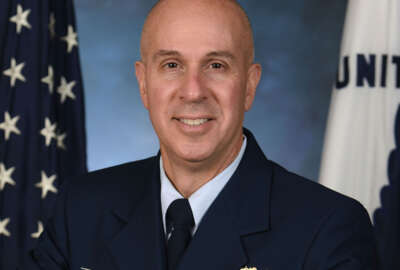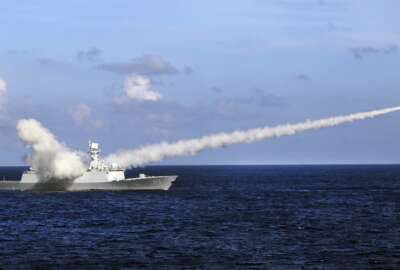Out of the woods with financial system, Coast Guard can turn attention to industry
The Coast Guard’s rollout of its financial system modernization was described by its leadership as “the beginning of a new era.”
The Coast Guard’s rollout of its financial system modernization was described by its leadership as “the beginning of a new era.” It certainly started in a different time, or more accurately about 20 years ago.
Since USCG’s transition to the Department of Homeland Security in 2002, administrations have needed to standardize business practices and modernize financial systems. But putting all of the department’s organizations under one system failed, according to Craig Bennett, USCG’s deputy assistant commandant for Resources and deputy chief financial officer.
In 2013, the Office of Management and Budget began looking more heavily into federal shared service providers and now the Coast Guard, as well as the Transportation Security Administration and Countering Weapons of Mass Destruction Office, which together account for 20% of DHS’ budget and logistical assets, were finally on a new financial system in January. Of the trio, Bennet said USCG was the most complicated.
“The Coast Guard has 16,000 users. It’s another order of 10,” compared to CWMD’s nearly 1,600 users, he said during a webinar hosted by ACT-IAC today. “And we have 30 interfaces to things like [Military Standard Requisitioning and Issue Procedures] and [the Defense Logistics Agency], military and civilian payroll, travel systems. We do a lot of permanent-change-of-station moves; we have a lot of things that kind of made us more complicated.”
USCG was customized and not compliant with federal accounting standards or cyber standards. As their authority to operate approached, Bennet said they wondered how much longer they could stay on the mil.gov network.
The modernization was not without frustration. During the cutover period, USCG had to shut off the legacy system because the authority to operate, the functionality and the cybersecurity were lacking. The period last three months instead of the planned two, during which time Bennet’s team performed 20,000 manual transactions and spent about $1 billion to keep worldwide operations going.
“We had our legacy [fiscal 20]21 data that we migrated into this new system. We had our cutover period system so basically, the first quarter of this fiscal year was meant was migrated,” he said. At the same time, they adopted new accounting and new common appropriations structures, “to be consistent with the rest of the department. We went from an asset-based to a mission-based appropriation structure, and all the fun of how to govern that when your structure and your muscle memory as an organization has not done it that way before.”
The parts that are new as of this year are largely working, but all of this has complicated the Coast Guard’s fiscal 2022 budget execution. Bennet said the service is still paying off a backlog of data migration invoices, and President Joe Biden’s Build Back Better package did not provide much investment in IT for the financial system modernization. However, the concept has resonated with Congress: USCG received more than $200 million in fiscal 2020, between the annual budget and the CARES Act, as well as $170 million in fiscal 2021 and a roughly equivalent amount in the 2022 enacted budget for its IT needs overall, he said.
Listening to more industry expertise
Aside from the financial system modernization, the Coast Guard is trying to embrace a more commercial mindset in software development.
Chief Information Officer Rear Adm. David Dermanelian said the service is moving forward with a couple large, omnibus contracts to leverage industry IT expertise. That will allow the service’s IT technicians and managers to perform higher level functions versus a more commodity function, which he said are highly important to service members’ ability to do their work.
“Today for the Coast Guard a laptop is to a Coastie – as a rifle is to an infantryman over in the Army,” he Dermanelian said. “So it’s really important that we build that relationship. So coming out of the gate in the next quarter or two, we should have a partner identified that will allow us to do better.”
As the USCG task force to deliver agile software development advances, Dermanelian said he would like to see his team reconstitute some skills.
“I may need one government person. I need to reach back into low code, no code environments where I’m going to be leveraging industry expertise and to be able to configure those sort of – especially those software-as-a-service environments – so I need someone to actually have had or has hands-on experience, so that we can be credible,” he said.
Speaking about USCG’s line of effort for recruiting case management capability, he said in a group of six people trying to configure a platform to perform, one should be from the government and the others should be from industry, upon whom USCG can lean for depth and scope of capabilities. He said USCG could learn from industry on performing background security enhancements or configuration changes that do not affect the end user experience, and how to do automation and testing better.
“The key for me, internal to my organization is … making sure I get an operator in the room during the development cycle. So you folks already know this, but if I’m going to develop a recruiting case management capability, I dog gone better have a recruiter in the room as part of the development team. This is where industry has helped me understand, helped me learn. It’s just taken a while to – we are big government – it’s taken a while to get this instantiated,” said Dermanelian, who after 34 years in the Coast Guard now plans to retire.
Copyright © 2025 Federal News Network. All rights reserved. This website is not intended for users located within the European Economic Area.
Amelia Brust is a digital editor at Federal News Network.
Follow @abrustWFED






